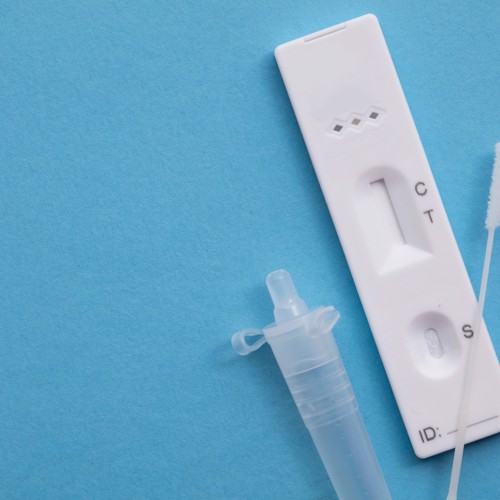Lateral Flow Tests
NO
PHARMACEUTICAL INFLUENCE
Lateral Flow Tests

Lateral flow tests (LFT) are becoming an ever increasing part of everyday life. Following their initial role in screening of health and social care workers they have since become available to the general public. In the UK they are licensed for use in asymptomatic individuals and people have been encouraged to test regularly in order to identify asymptomatic cases. Many large events from sports matches to West End shows require partially or unvaccinated individuals to show proof of a recent negative lateral flow to gain entry.
In this context, I am hearing from increasing numbers of patients presenting to general practice with possible covid-19 symptoms who have used only a LFT and are surprised to hear they should still have a PCR test.
So what is the difference between lateral flow and PCR tests and why are LFT recommended for asymptomatic screening in the UK but not symptomatic patients?
RT- PCR tests detect the genetic material from the virus. They require laboratory testing and results take hours to days. LFTs detect the presence of the SARS-CoV-2 nucleocapsid antigen. In the UK the Innova LFT is the most widely used. It is a rapid test providing results in 20 minutes. There are many different LFTs used around the world. Their accuracy varies and has been discussed in a recent Cochrane review. The Innova LFT did not meet WHO criteria for replacement of PCR (target acceptable sensitivity ≥80%, specificity ≥97%). (Remember sensitivity is the probability of a positive test amongst patients with the disease, specificity is the probability of a negative test in people without the disease.) According to the review the sensitivity ranged from 79% when the test was conducted by laboratory scientists down to 28% in an outbreak investigation.
More recently the BMJ published a population based cohort study comparing the real world performance of the Innova LFT to PCR. 5869 asymptomatic adults in Liverpool self administered the tests under the supervision of trained staff. Results showed that overall the LFT had a sensitivity of 40% relative to the PCR based test, increasing to 69.4% in individuals with markers for a high viral load.
The long and short of it is that the Innova LFT missed cases that could be detected via PCR.
This becomes increasingly important when testing patients with a higher likelihood of infection (i.e. symptomatic patients). Dredging back to your statistics knowledge you may recall that as prevalence of a condition increases, the negative predictive value (probability of an individual with a negative test truly not having the disease) decreases despite the test sensitivity remaining constant. Confused? The BMJ has recently published a handy interactive infographic which allows you to play around and get to grips with this. Let's take Colin as an example. He has potential symptoms of Covid-19. Let's also assume he has been in contact with a student who tested positive for covid-19. On these grounds he has a high pre-test probability of infection. If we estimate it to be 40% and use a LFT with a sensitivity of 50% there is a 25% chance of him receiving a false negative. In contrast, if we take a patient with a low pre-test probability of Covid-19 of 0.1% (asymptomatic, no known contacts) and use a LFT with the same sensitivity of 50% then there is only a 0.05% chance of a false negative.
In summary, if a patient is asymptomatic and therefore less likely to have covid-19, a negative LFT can provide adequate reassurance as false negatives are low. However, if they are symptomatic and therefore more likely to have covid-19, a PCR is needed as the best available test to reduce false negatives.
Now back to the figure of ‘99.9% accurate’ quoted on the NHS website this refers to the specificity - the likelihood of the test being negative if you do not have the disease. This is important in a screening tool for asymptomatic patients as it means the chances of receiving a false positive and being asked to isolate when you don’t have covid-19 are low. However the less statistically savvy may be misled into thinking 99.9% accurate implies it identifies nearly all positive cases, which as discussed above is not the case. Of note, if a patient gets a positive LFT a PCR test is recommended to confirm.
Take home message: if a symptomatic patient tells you they have had a negative covid-19 test check it was a PCR.
Dr Laura Darby
5th August 2021
Join us at one of our upcoming courses or live webinars

Recent NB Blogs
Need an immediate update? – all our courses are available on demand
Did you find this useful?
You can quickly add CPD to your account by writing a reflective note about the Lateral Flow Tests post you've read.
Log in to your NB Dashboard and use the 'Add Reflective Note' button at the bottom of a blog entry to add your note.

